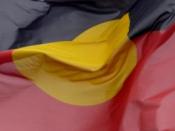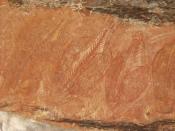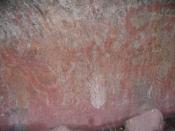Balance of Man and Nature in Japanese and Australian Aboriginal Art
Many cultures use art as a means of expression of their spiritual beliefs. Religion has been a common theme seen in several art medians. This influence can be seen in architecture, painting, sculptures, and decorative arts. The two different art styles that I will discuss are the Japanese and contemporary Aboriginal. While both show a connection to ancestors and balance with the universe through their art, they both take different approaches to the aesthetics of their art.
In order to understand cotemporary Aboriginal art, we must first define the motivating force behind it, the concept of "Dreaming". Dreaming is a European term used by Aborigines to describe their stories about the balance of spiritual beliefs and moral and natural elements from the origin of the universe, when ancestors lived, to the present (http://www.aboriginalart.nl). Aboriginal peoples trace their origins directly from these great ancestral beings.
Aboriginals are continually reminded of the presence of the creator beings. This happens not only through the features of the landscape but also through songs, paintings and ceremonies. The Dreaming "tells of the journey and the actions of Ancestral beings that created the natural world" (http://www.aboriginal-art.com). The Dreaming is infinite and links the past with the present to determine the future. A Dreaming can also depict the relationship between a person, and the environment it inhabits. Often times, Aboriginal paintings will depict food, water-holes, animals, tracks, etc showing the interdependence between a person and its surroundings. Dreaming is thus a major and important dimension for Aboriginal culture today, and incorporates many more complexities than this summary can convey.
From the European point of view it may be useful to consider it an ongoing event with the land, creatures and Aboriginal people all playing their role.



Art
Thank you for a most interesting essay. You managed to convey a good overview of both Aboriginal and Japanese perspectives of art. Your explanations were well thought out and clearly expressed.
Great work!
2 out of 2 people found this comment useful.